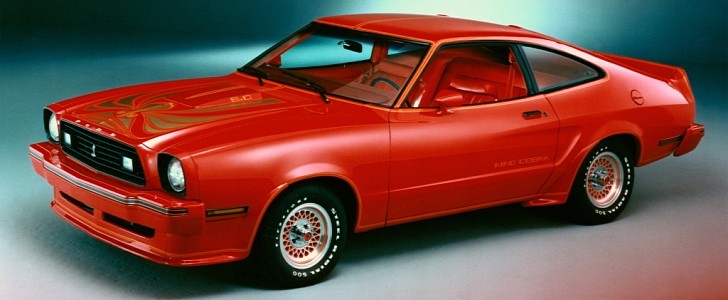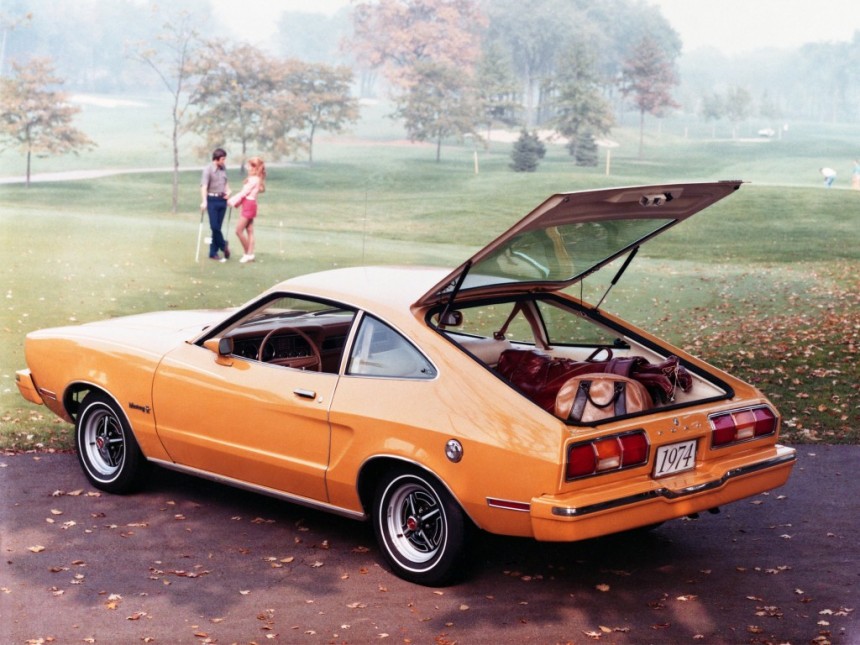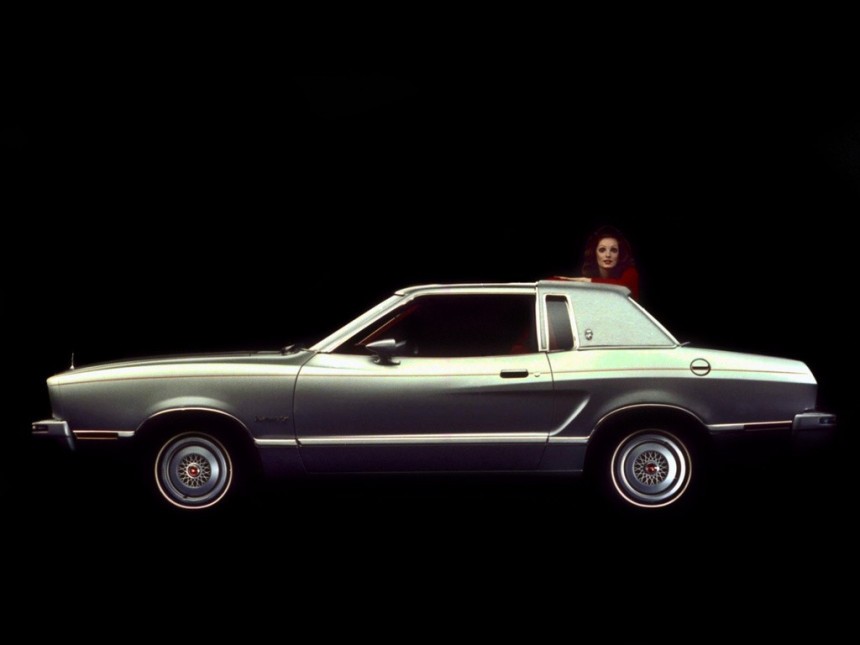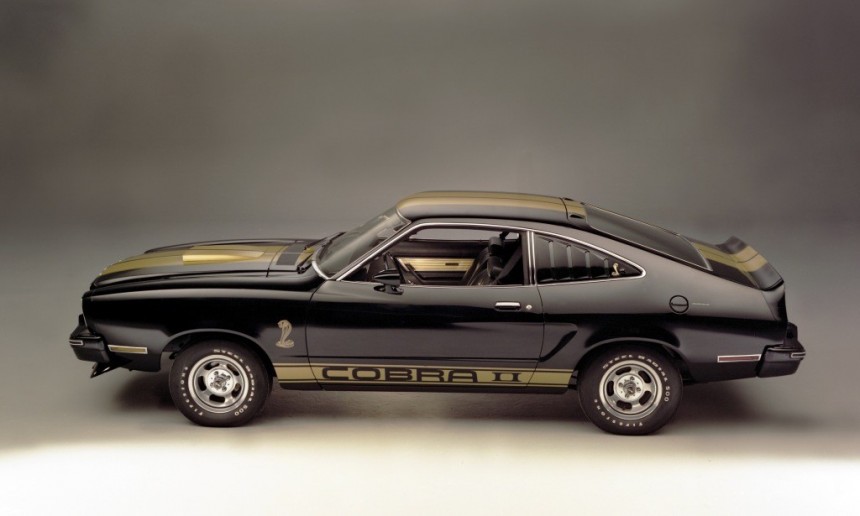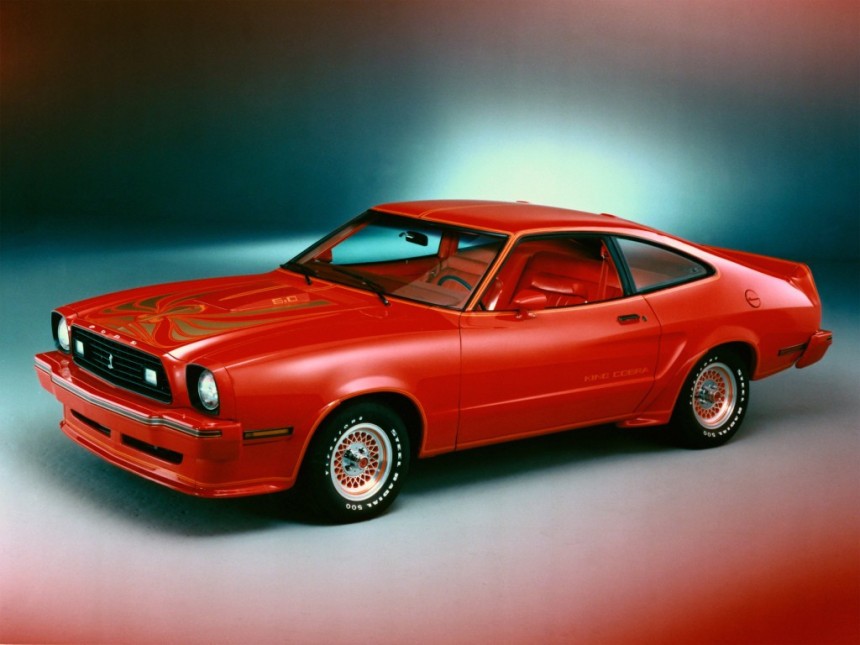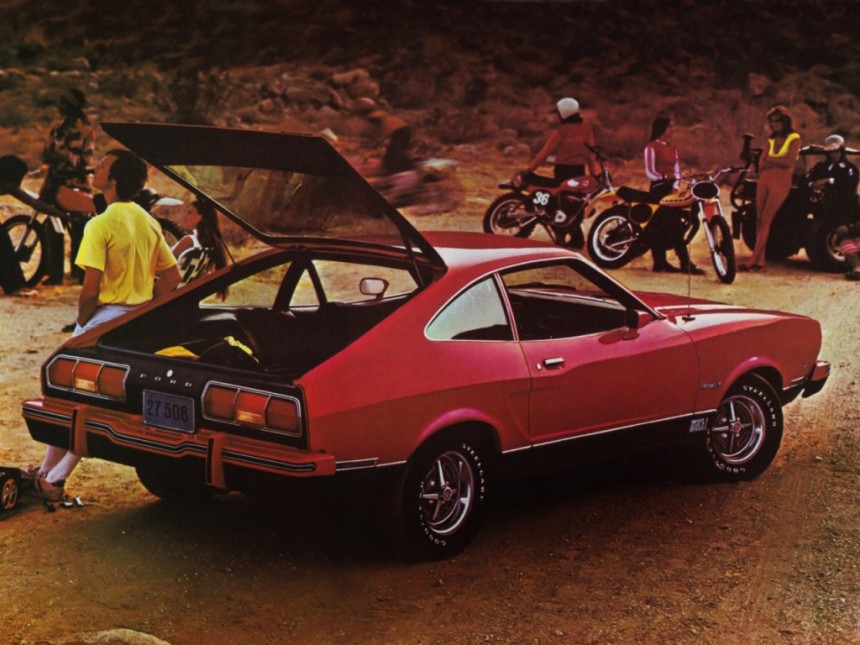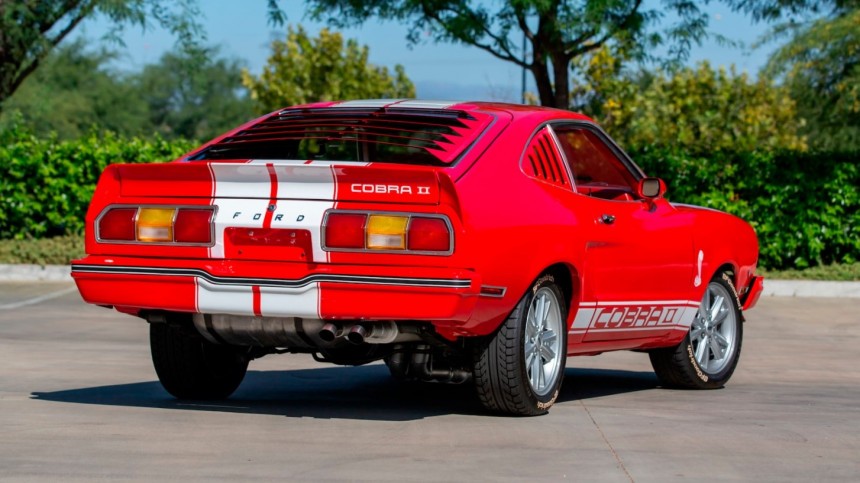Introduced for the 1974 model year and sold until 1978, the second-generation Ford Mustang, also known as the Mustang II, is the most hated version of the iconic pony car.
Billed as slow, ugly, and a rebadged Pinto almost 50 years ago, the Mustang II is still considered a failure by most Mustang fanatics. That said, is the second-gen 'Stang such a terrible pony? Not really. And here's why.
However, we need to keep in mind that the Mustang II was the result of a dramatic shift for the car industry caused by the 1973 oil crisis. New regulations had rendered big-power muscle cars obsolete and forced automakers to adopt more environmentally friendly drivetrains.
The Ford Mustang wasn't the only pony that had lost its high-power appeal. The Chevrolet Camaro came with up to 185 horsepower in non-Z28 trim in 1974, while the Dodge Charger had dropped to 190 horses for 1975. Granted, both the Camaro and the Charger still had V8 engines, but Ford reintroduced the eight-cylinder after a one-year hiatus.
Other muscle cars weren't that lucky. The Plymouth Barracuda, Dodge Challenger, and AMC Javelin were all discontinued in 1974. A slower, less powerful Mustang was Ford's way to save the nameplate.
As Ford updated the first-gen Mustang, it became increasingly larger and heavier, to the point where the final iterations had very little in common with the original concept. Specifically, the 1973 car was eight inches (203 mm) longer, six inches (152 mm) wider, and 1,100 pounds (499 kg) heavier than the 1964 'Stang. That's almost 45% heavier!
With the second-gen redesign, Ford brought the Mustang back to basics. At 175 inches (4,445 mm) long, it was actually six inches (152 mm) shorter than the original 'Stang. It was also just two inches (51 mm) wider, while the wheelbase had shortened by about 12 inches (305 mm). It was almost 200 pounds (91 kg) heavier than the 1965 Mustang but significantly lighter than later first-gen cars.
While not as powerful as its predecessor, the Mustang II was on par with early 1970s entry-level models in terms of power-to-weight ratio. Again, not bad for a Malaise-era pony.
The first-gen pony was also based on Ford's entry-level car at the time, the Falcon, while the third- and fourth-gen 'Stang shared underpinnings with the Fairmont. The Fox platform was actually shared by more than 10 nameplates across the Ford, Mercury, and Lincoln brands, which wasn't a bad thing.
If you want a more modern example, the modern Mustang GT shares the 5.0-liter Coyote V8 with the F-150 truck. Similarly, the 2.3-liter EcoBoost is shared with Ford and Lincoln SUVs, not to mention the Focus hatchback. I haven't heard anyone complain about that.
The Mustang II was the perfect pony for the times, and new customers rushed into dealerships to get one. Ford sold no fewer than 385,993 examples in 1974, which turned out to be the nameplate's best sales year since 1967. To put it into perspective, Ford sold fewer than 140,000 Mustangs per year in 1972 and 1973.
Sales eventually dropped to around 188,000 units per year in 1975 and 1976, but they were still higher compared to the early 1970s. Following a drop to 153,173 units in 1977, sales rebounded to 192,410 for the Mustang II's final year on the market.
Overall, Ford sold 1.1 million second-gen 'Stangs, an impressive figure for a five-year run. With an average of more than 200,000 units per year, the Mustang II was actually more successful than the following generations, which failed to move more than 180,000 units a year on average.
By comparison, the Mustang II is dirt cheap, even if you're going for the limited-edition King Cobra. If you're not aiming for range-topping trims, a decent Mustang II you can work on will set you back less than $5,000. Around $10K could get you a pristine example if you're patient enough.
Of course, low-mileage models can fetch more than $20,000, while a Cobra version in tip-top shape can go for as much as $30,000, but that's still pennies compared to high-performance first-gen cars.
It's also worth noting that Mustang II prices are on the rise. They're not going wild anytime soon, but it's a steady increase that could turn the second-gen car into a proper collectible.
The Mustang II is also a solid platform for restomods and even dragsters. Some enthusiasts used to race them back in the day, so it's a good candidate for a nostalgia gasser or a blown quarter-mile beast.
Yes, the Mustang II is the weaker link in the pony's lineage, but only if we ignore the era it was designed for. If we measure each generation on its own merits, the Mustang II was far from terrible. And you can bring out the tar and the feathers now because I think it actually looks pretty good.
It wasn't all that slow for the era
It's easy to bash on the Mustang II for being slower and significantly less powerful than its predecessor. The first-gen Mustang had grown into a full-fledged muscle car in the late 1960s, and Shelby took it into 500-horsepower territory.However, we need to keep in mind that the Mustang II was the result of a dramatic shift for the car industry caused by the 1973 oil crisis. New regulations had rendered big-power muscle cars obsolete and forced automakers to adopt more environmentally friendly drivetrains.
The Ford Mustang wasn't the only pony that had lost its high-power appeal. The Chevrolet Camaro came with up to 185 horsepower in non-Z28 trim in 1974, while the Dodge Charger had dropped to 190 horses for 1975. Granted, both the Camaro and the Charger still had V8 engines, but Ford reintroduced the eight-cylinder after a one-year hiatus.
It was a back-to-basics Mustang
Most gearheads remember the first-gen Mustang for versions like the Mach 1, Boss 429, and the Shelby GT500. But they often forget that the Mustang rose to fame thanks to its early design. When it first arrived in 1964, it was a fun-to-drive, light compact with moderately powerful engines.As Ford updated the first-gen Mustang, it became increasingly larger and heavier, to the point where the final iterations had very little in common with the original concept. Specifically, the 1973 car was eight inches (203 mm) longer, six inches (152 mm) wider, and 1,100 pounds (499 kg) heavier than the 1964 'Stang. That's almost 45% heavier!
While not as powerful as its predecessor, the Mustang II was on par with early 1970s entry-level models in terms of power-to-weight ratio. Again, not bad for a Malaise-era pony.
It wasn't a rebadged Pinto
Many people believe that the Mustang II was a rebadged Ford Pinto, but that's just a misconception. Sure, the second-gen 'Stang did share some components with the Pinto, but they were limited to suspension parts and brakes. Even so, the Mustang II wasn't the first of its kind to share components with a lesser economy car.If you want a more modern example, the modern Mustang GT shares the 5.0-liter Coyote V8 with the F-150 truck. Similarly, the 2.3-liter EcoBoost is shared with Ford and Lincoln SUVs, not to mention the Focus hatchback. I haven't heard anyone complain about that.
It was a sale success
When the Mustang II arrived in showrooms, many first-gen owners were quick to dismiss it due to its smaller size and underpowered engines. It was labeled as a disgrace. But times had changed. With gasoline prices and insurance premiums on the rise, the average buyer was no longer interested in powerful muscle cars with large-displacement V8s.Sales eventually dropped to around 188,000 units per year in 1975 and 1976, but they were still higher compared to the early 1970s. Following a drop to 153,173 units in 1977, sales rebounded to 192,410 for the Mustang II's final year on the market.
Overall, Ford sold 1.1 million second-gen 'Stangs, an impressive figure for a five-year run. With an average of more than 200,000 units per year, the Mustang II was actually more successful than the following generations, which failed to move more than 180,000 units a year on average.
It's an affordable classic (and a future collectible)
First-generation Mustangs are quite expensive. Sure, you can find really beat-up examples with inline-six engines for cheap, but a solid V8 model in good condition will set you back more than $30,000. Heck, some rarer, high-performance examples can go for more than $100K, while a few of them can even reach $500,000.By comparison, the Mustang II is dirt cheap, even if you're going for the limited-edition King Cobra. If you're not aiming for range-topping trims, a decent Mustang II you can work on will set you back less than $5,000. Around $10K could get you a pristine example if you're patient enough.
Of course, low-mileage models can fetch more than $20,000, while a Cobra version in tip-top shape can go for as much as $30,000, but that's still pennies compared to high-performance first-gen cars.
The Mustang II is also a solid platform for restomods and even dragsters. Some enthusiasts used to race them back in the day, so it's a good candidate for a nostalgia gasser or a blown quarter-mile beast.
Yes, the Mustang II is the weaker link in the pony's lineage, but only if we ignore the era it was designed for. If we measure each generation on its own merits, the Mustang II was far from terrible. And you can bring out the tar and the feathers now because I think it actually looks pretty good.
